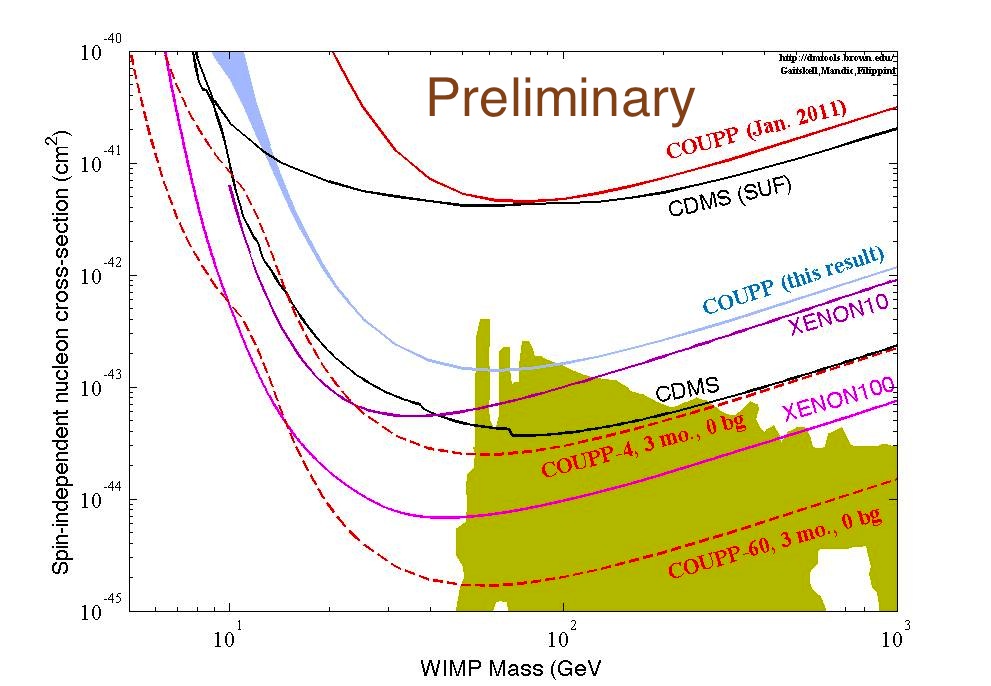As described previously in this space, the COUPP Collaboration uses bubble chambers to search for dark matter particles. We just finished a run of our 4 kg bubble chamber in the deep underground site of SNOLAB in Northern Ontario. This run was successful in many ways, particularly in demonstrating the reach of the acoustic rejection against alpha decays – from these data, we know that the probability that an alpha decay sounds like a signal event is less than 0.7%. Unfortunately, we also discovered that the very thing that is giving us this great reduction in background, the sensors we use to listen to the sound, are now giving us new events in the form of neutrons. Despite the newly discovered background, we have been able to increase the sensitivity of our detector by over a factor of ten from our last result in January, as shown in the figure above (click on the image for larger version). We plan to submit these new results for publication in December, and work is underway to replace the radioactive sensors with new low background versions in the hopes of gaining another order of magnitude before this time next year.
– Hugh Lippincott










